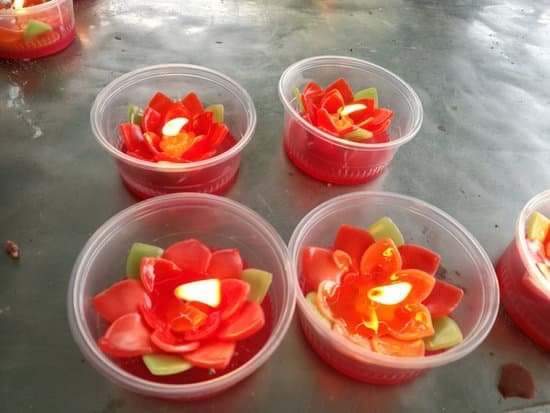Candle making is a popular and rewarding hobby for many, but one important aspect often overlooked is the use of mold release agents. In this article, we will explore the process of making candle mold release and understand why it is an essential part of the candle making process.
Mold release agents are crucial in ensuring that candles can be easily removed from their molds without damaging the shape or texture. Without proper mold release, candles can stick to the molds, resulting in a difficult and messy removal process. Understanding the importance of mold release in candle making is key to achieving professional-looking and high-quality candles.
In the following sections, we will delve into the basics of candle mold release, compare different types of mold release agents, provide DIY recipes for making your own mold release agent at home, offer tips and tricks for effective use, recommend top mold release products for candle makers, and highlight common mistakes to avoid. By learning about these aspects, you will be able to master the art of using mold release to create perfect candles every time.
The Basics of Candle Mold Release
Candle mold release is a crucial component in the candle making process, as it ensures that the finished product can be easily removed from the mold without causing damage. Mold release agents work by providing a barrier between the candle wax and the mold, allowing for easy separation once the wax has hardened. Without proper mold release, candles can become stuck inside the molds, leading to breakage and an overall unsatisfactory result.
In essence, candle mold release is necessary to prevent any adhesion between the wax and the mold surface. This is particularly important for intricate or detailed molds, where any sticking or tearing could ruin the final appearance of the candle. By using a high-quality mold release agent, candle makers can ensure that their finished products maintain their shape and detail without any imperfections.
There are different types of candle mold release agents available on the market, ranging from natural options such as vegetable oil or beeswax to synthetic alternatives like silicone-based sprays or paraffin-based solutions. Each type of release agent has its own unique features and benefits, so choosing the right one will depend on the specific requirements of your candle making process.
When deciding on which type of mold release to use, factors such as ease of application, cost, effectiveness, and environmental impact should all be taken into consideration.
| Candle Mold Release Type | Features |
|---|---|
| Natural (e.g. vegetable oil or beeswax) | Environmentally friendly; may require more frequent reapplication |
| Synthetic (e.g. silicone-based sprays or paraffin-based solutions) | Durable; provides excellent protection with minimal reapplication |
Different Types of Mold Release Agents
When it comes to making candles, using a mold release agent is essential for achieving the perfect shape and finish. Mold release agents create a barrier between the candle wax and the mold, allowing for easy removal and preventing damage to the candle. Understanding the different types of mold release agents available can help candle makers choose the best option for their specific needs.
There are two main types of mold release agents: natural and synthetic. Natural mold release agents are made from organic materials such as vegetable oils or waxes. These products are popular among environmentally conscious candle makers who prefer to use natural ingredients in their craft. Synthetic mold release agents, on the other hand, are formulated using chemical compounds specifically designed to provide efficient and reliable mold release properties.
Natural mold release agents offer a more sustainable and eco-friendly option for candle makers. They are biodegradable and pose minimal environmental impact compared to synthetic options. Additionally, some natural mold release agents may also offer additional benefits such as conditioning the molds and imparting a pleasant scent to the finished candles. However, it’s important to note that natural options may have a shorter shelf life compared to synthetic alternatives.
On the other hand, synthetic mold release agents are formulated with carefully selected chemicals that provide excellent lubricity and release properties. These products are often designed to withstand high temperatures and pressure, making them suitable for various candle making processes.
Synthetic mold release agents typically offer longer shelf life and consistent performance, making them a popular choice for commercial candle production operations. Ultimately, the decision between natural and synthetic mold release agents depends on individual preferences, specific candle making needs, and environmental considerations.
DIY Mold Release Recipes
Making your own candle mold release agent at home can be a cost-effective and eco-friendly alternative to purchasing commercial products. By using simple ingredients that are easy to find, you can create a mold release agent that is just as effective as store-bought options. Plus, making your own mold release allows you to customize the formula to suit your specific candle making needs.
One of the most common DIY mold release recipes involves using a combination of ingredients such as mineral oil, beeswax, and vegetable shortening. These substances create a barrier between the candle wax and the mold, allowing for easy removal once the candle has set. Additionally, adding a small amount of rubbing alcohol or vinegar to the mixture can help improve the overall release properties of the agent.
Another popular DIY mold release recipe involves using silicone spray as a base ingredient. Silicone spray is known for its excellent non-stick properties, making it an ideal component for creating a mold release agent. By combining silicone spray with other household items such as cooking oil or petroleum jelly, you can produce a highly effective mold release agent that works well with various types of candle molds.
It’s important to note that when making your own candle mold release at home, it’s essential to follow each recipe carefully and test the agent on a small scale before using it in large batches. This will allow you to make any necessary adjustments and ensure that your homemade mold release is compatible with different types of candle waxes and molds.
| DIY Mold Release Recipe | Main Ingredients |
|---|---|
| Mineral Oil-Based Recipe | Mineral oil, beeswax, vegetable shortening |
| Silicone Spray-Based Recipe | Silicone spray, cooking oil/petroleum jelly |
Tips and Tricks for Using Mold Release Effectively in Candle Making
Proper Application Techniques
When it comes to using mold release effectively in candle making, the application process is key. One common mistake many beginners make is applying too much or too little of the release agent. To ensure proper coverage and ease of removal, it is important to apply a thin, even coat to all surfaces of the mold. This can be done using a spray bottle or a soft cloth, depending on the type of release agent being used.
Choosing the Right Mold Release Agent
The type of mold release agent used can greatly impact the quality of the finished candles. For example, if working with silicone molds, it is essential to use a release agent specifically designed for use with silicone materials. Additionally, considering factors such as fragrance oils and dyes used in the candle making process can help determine whether a natural or synthetic mold release agent is best suited for the job.
Regular Maintenance and Cleaning
To ensure continued effectiveness of the mold release agent, regular maintenance and cleaning of molds is essential. Over time, residue from wax and other materials can build up on the surface of the mold, compromising its ability to release candles easily. By regularly cleaning and reapplying mold release as needed, candle makers can prolong the life of their molds and maintain consistent quality in their products.
Top 5 Recommended Mold Release Products for Candle Makers
When it comes to making candles, using the right mold release product can make all the difference in the quality of your finished product. Choosing the best mold release agent for your candle making needs can be overwhelming, with so many options available on the market. To help you navigate through the numerous choices, here are the top 5 recommended mold release products for candle makers:
1. Mann Ease Release 200: This versatile mold release agent is perfect for candle makers working with various types of molds, including silicone, latex, and polyurethane. It provides a smooth and consistent release without leaving any residue behind.
2. Stoner Molding Solutions Mold Release: This high-quality mold release spray is ideal for use with both metal and plastic candle molds. Its non-toxic formula ensures that it won’t affect the fragrance or color of your candles.
3. Castin’ Craft Mold Release & Conditioner: This multi-purpose mold release and conditioner is specially formulated for use with resin and wax molds. It not only facilitates easy release but also conditions the mold for prolonged use.
4. Eject-it 914 Non-Silicone Mold Release: If you prefer a non-silicone option, this mold release agent is an excellent choice. It’s suitable for a wide range of materials and can withstand high temperatures, making it perfect for candle making.
5. Silicone Grease: For those who prefer a more budget-friendly option, silicone grease is a great alternative to traditional mold release agents. It provides a reliable release while also lubricating and protecting molds from wear and tear.
By choosing any of these top 5 recommended mold release products, candle makers can ensure that their candles will come out of the molds easily and flawlessly every time they make them.
Common Mistakes to Avoid When Using Mold Release in Candle Making
When it comes to using mold release in candle making, there are some common mistakes that can easily be made. These mistakes can impact the quality of your candles and the effectiveness of the mold release agent. By being aware of these mistakes, you can avoid them and ensure that you’re getting the best results from your mold release.
Using Too Much or Too Little Mold Release
One common mistake in candle making is using an excessive amount of mold release. This can lead to a buildup on your molds, affecting the finish of your candles. On the other hand, using too little mold release may result in difficulty removing the candles from the molds, leading to breakage or damage. It’s important to follow recommended guidelines for applying mold release to ensure smooth and easy removal of your candles.
Not Allowing Sufficient Drying Time
Another mistake is not allowing enough time for the mold release to dry before pouring in the wax. Insufficient drying time can cause the mold release to mix with the wax, affecting its ability to adhere properly to the mold. This can result in imperfections on the surface of your candles and may make it difficult to achieve a clean and polished look.
Using Incompatible Materials
Using incompatible materials when applying mold release can also be a mistake. Certain types of mold release agents may not work well with certain types of molds or candles. It’s important to ensure that you’re using a compatible mold release agent for your specific materials to avoid any negative effects on your finished product.
By being mindful of these common mistakes, you can improve your candle making process and achieve better results when using mold release agents.
Conclusion
In conclusion, mastering the use of mold release in candle making is crucial for achieving perfect candles every time. Understanding the importance of mold release agents and knowing the basics of how they work is essential for any candle maker. Whether using natural or synthetic options, it’s important to choose the right mold release agent that suits your specific needs and preferences.
For those who prefer a more hands-on approach, DIY mold release recipes can be a cost-effective and customizable option. By making your own candle mold release agent at home, you have the flexibility to experiment with different ingredients and scents to enhance your candle-making process.
When using mold release, it’s important to keep in mind some tips and tricks for effective application. Additionally, being aware of common mistakes to avoid can help prevent any issues that may arise during the candle-making process. By following these guidelines and recommendations, you can ensure that your candles turn out flawless every time.
Overall, by mastering the art of using mold release for candle making, you can achieve professional-quality candles with ease. Whether you’re a beginner or an experienced candle maker, understanding the importance of mold release and using it effectively is key to producing beautiful, high-quality candles.

Welcome to my candle making blog! In this blog, I will be sharing my tips and tricks for making candles. I will also be sharing some of my favorite recipes.





